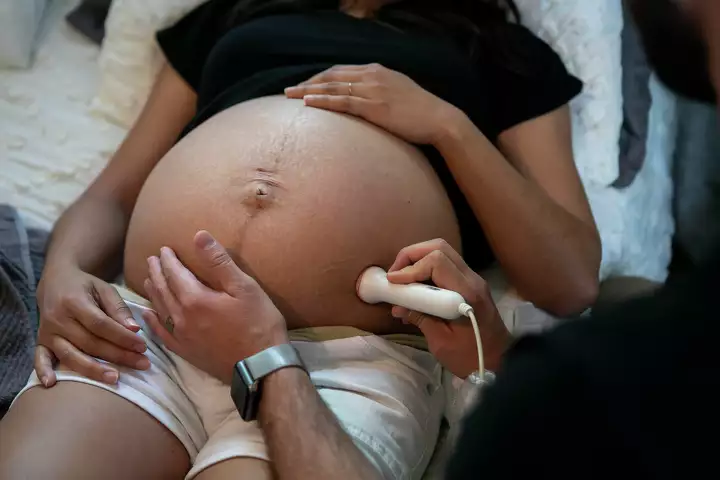
Over 40 percent of Texans live in maternal care deserts, new report says
Harris County residents can drive one mile or up to 36 miles to receive maternal care.
Over 40 percent of Texans live in maternal care deserts, new report says
The new data by the non-profit group March of Dimes shows people in rural areas and Black, Hispanic, indigenous, and Asian residents are disproportionally impacted.By Kennedy SessionsAug 11, 2023

Over 40 percent of Texas people live in a maternal health care desert and are more inclined to have inadequate prenatal care.
Josie Norris/Staff Photographer
Over 45 percent of Texas counties classify as "maternity care deserts" compared to 32.6 percent of counties nationally, according to a data report released by March of Dimes this month. The non-profit health organization defines a maternity care desert as an area lacking birthing facilities or maternal care providers.
Across the state, on average, Texas residents travel around eight miles to the nearest birthing facility, with the highest travel distance up to 70 miles.
In Harris County, residents travel an average of ten miles to their closest maternal care center but, in some areas, drive up to 30 miles to the nearest birthing care center. Residents who live closer to the Houston city center travel less than a mile or up to three miles based on their zip code.
"Where you live really does matter," Director of Maternal & Child Health Collective Impact Alicia Lee said. "There is a wide distance in healthcare by which an individual can travel to a birthing hospital."
While not necessarily surprised by the numbers, Lee noted how the entire country is experiencing a maternal healthcare crisis. Lee notes that Texas' maternal healthcare figures specifically stem from its long-term record of being the state with the highest uninsured population, including women of childbearing age. Still, she pointed to policies like Texas' recent expansion of postpartum Medicaid coverage to 12 months as a step in the right direction. March of Dimes noted that Medicaid expansion, doula and midwifery care, and programs like Telehealth services could also improve accessibility to care.
"It's going to contribute to better health outcomes in our state as a result," Lee added.
The March of Dimes report also uncovered data surrounding the availability of family planning services, community-level factors associated with prenatal care usage, and the burden and consequences of chronic health conditions across the state. Each factor contributes to who and how people access quality care in the state.
According to the data center, residents living in 94 percent of Texas counties have a very high vulnerability to adverse outcomes. Texas also has a small percentage of Title X compared to the rest of the U.S. A Title X clinic is a federally funded healthcare site that provides low-cost reproductive healthcare services, including contraceptives, wellness exams, and breast and cervical cancer screenings.
For every 100,000 people in Texas, there are 2.8 Title X clinics, while the U.S. has 5.3 clinics. Altogether, Texans who live in maternity care deserts travel 3.2 times further to reach the closest Title X clinic. The report maps out the areas with Title X clinics across the state and their reproductive and maternal vulnerability. The report finds that the availability of family planning services is essential to the pregnant person and baby's health to stave health consequences like preterm birth, depression, and anxiety.
Regarding disparities in care, non-white communities have historically had higher rates of inadequate prenatal care and are likelier not to receive important health screenings and appropriate monitoring of the baby’s growth. The likelihood of insufficient prenatal care is even more exacerbated by socioeconomic determinants like poverty, social support and lack of education.
In Texas, 20.4 percent of residents received inadequate prenatal care compared to 14.8 percent in the U.S. Based on race; black people are 28 percent more likely to receive inadequate prenatal care in high-vulnerability areas. Hispanic pregnant people were 24 percent more likely to receive inadequate care, with Indigenous people shortly behind at 21 percent and Asian people almost 20 percent.
The report finds that chronic health conditions are increasing in the U.S. People with chronic health conditions are 43 percent more likely to have a preterm birth than those without. In total, 66 percent of counties in Texas have a high burden of chronic health conditions and a high rate of preterm
birth.






